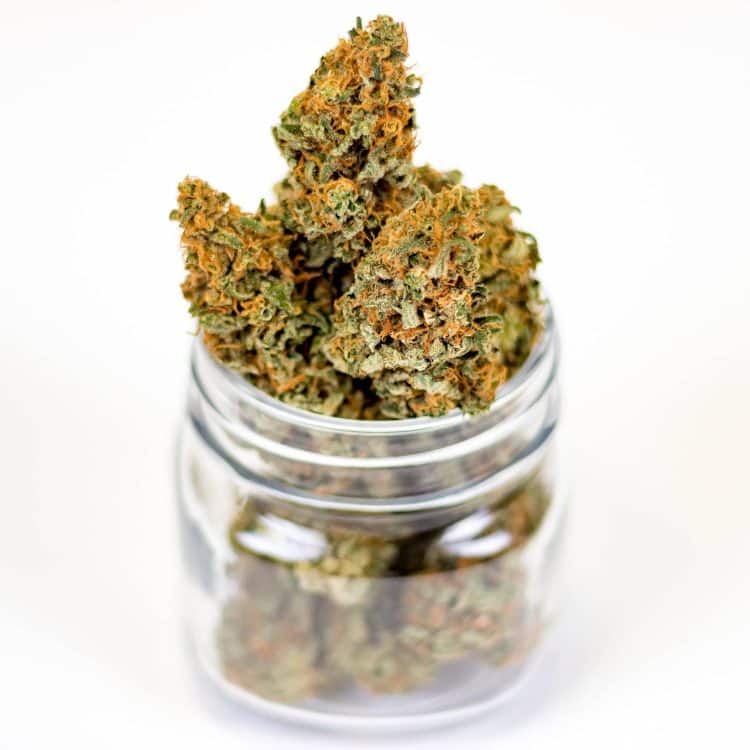Cannabis is incredibly complex. Researchers have identified more than 500 different chemical compounds (e.g., cannabinoids, terpenes, etc.) and noted over 700 distinct cultivars. [1] Just last year, Extraction Magazine reported on the discovery of a new cannabinoid, tetrahydrocannabiphorol (THCP), more potent than tetrahydrocannabinol (THC). To measure the many diverse molecules in the plant, a 2020 study in Analytical Chemistry established an “in-depth cannabis multiclass metabolite profiling” method. [1]
Researchers started with eight cannabis samples purchased from local stores in Belgium. They then turned to stir bar sorptive extraction. This means using stir bars that extract and concentrate analytes from the sample. In this case, they used Twister® (by Gerstel) stir bars with 63 μL polydimethylsiloxane, aka PDMS Twisters.
To determine optimal extraction conditions, the researchers relied on design of experiments, which encouraged a 5:4:1 ratio of water/methanol/acetone at 50º C for 60 minutes. Flower was mixed (and stirred) at 50 mg per 5 ml solvent mixture.
With the stir bar extraction complete, the authors subjected the stir bars to desorption in a thermal desorption unit (TDU) attached to an Agilent 7890 GC (gas chromatograph) and Pegasus 4D GCxGC-LR ToF MS (by LECO; low resolution (LR) two-dimensional gas chromatography (GC×GC) time-of-flight mass spectrometer (ToF MS)). They set the TDU to 30º C and heated it to 300º C for 5 minutes. Low resolution refers to mass resolution readings ≤ 25,000 full width at half maximum (fwhm). The authors note that multidimensional GC (columns in a series) provides “superior selectivity and signal enhancement…”
They subjected samples to a second system with high resolution (HR; mass resolution ≥ 25,000 fwhm), as in GCxGC-HR ToF MS. This time, they employed a TD100-xr™ (Markes International) for desorption and set the initial temp at 50º C prior to heating to 300º C for 5 minutes.
Helium was used as the carrier gas although flow rates differed. Namely, the authors optimized flow for the LR system at 0.4 mL/min (nonpolar column) and 7 mL/min (mid-polar column), while they kept the HR system at 1 mL/min (both columns).
After validating the method, they noted its ability to provide a “comprehensive
chemical profile of all the cannabis flowers under investigation.”
Interestingly, the authors distinguished “sativa” subtypes against “indica” and “hybrid” subtypes based on store labels (which can be indirectly or directly mislabled) and similarity between chemical profiles (namely, 754 consistently detected “features”). That said, there were only eight samples (2 reported as “indica”, 2 “hybrid”, and 4 “sativa”).
“Principal component analysis on all detected metabolites revealed chemical differences among the sample types which could be associated with the plant subspecies,” they explained, supporting “classification based on the chemotype, following the recent USP [United States Pharmacopeia] recommendations.” It should be noted, however, that the top two principal components only explained 55% of the variance in the data, thus limiting the conclusions’ validity.
The HR system revealed some other critical chemicals. For example, they found two pesticides in one sample, uncovered a plasticizer (bisphenol G) in every sample, which they suspect came from plastic packaging, and also detected a synthetic cannabinoid, HU-331. [1]
Reference
- Franchina FA, Dubois LM, Focant JF. In-depth cannabis multiclass metabolite profiling using sorptive extraction and multidimensional gas chromatography with low- and high-resolution mass spectrometry. Anal Chem. 2020;92(15):10512-10520. doi:10.1021/acs.analchem.0c01301. [Impact Factor: 6.785; Times Cited: 5 (Semantic Scholar)]
Image: Social Butterfly from Pixabay











